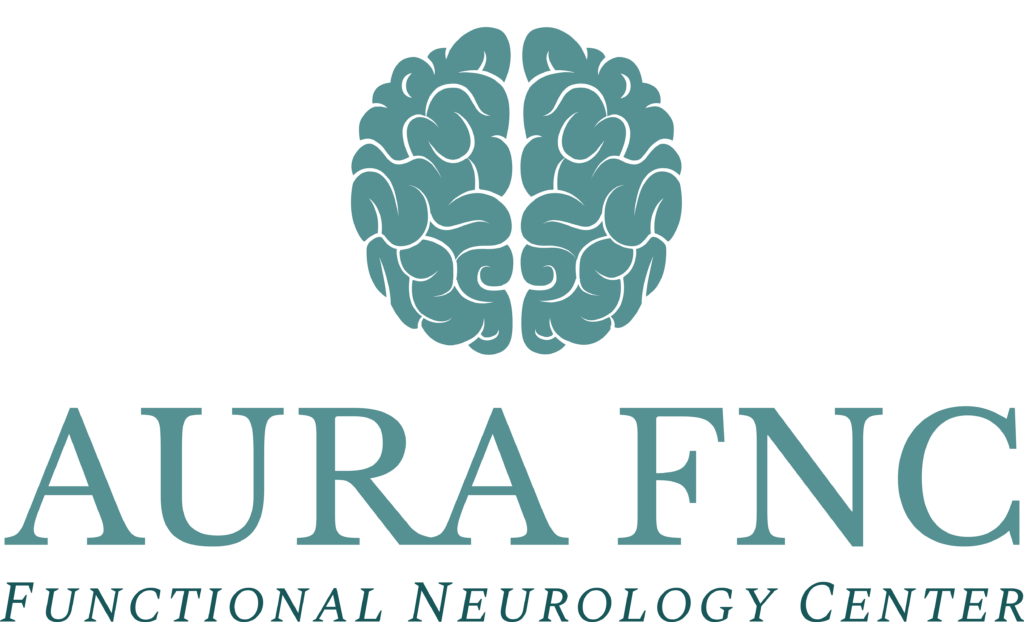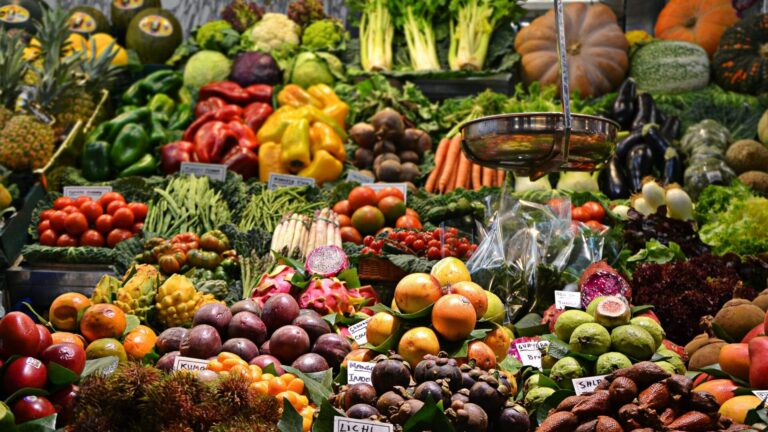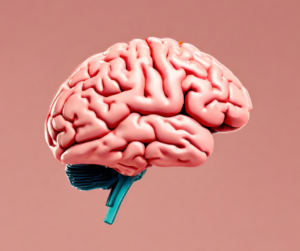Dr. Diana Tyler knows that recalling which foods can trigger migraines isn’t straightforward. Given that these triggers differ among individuals, comprehending them can be advantageous.

Dr. Diana Tyler DC, DACNB
Founder of Aura Functional Neurology Center. Board Certified Chiropractic Neurologist and migraine specialist. Graduate of Palmer College of Chiropractic and Diplomate of the American Chiropractic Neurology Board.
Recalling which foods can trigger migraines isn’t straightforward. Given that these triggers differ among individuals, comprehending them can be advantageous.
Table of Contents:
- Foods That Can Trigger Migraine
- How To Track Triggers and Identify Patterns in Your Diet
Foods That Can Trigger Migraine
Migraine headaches are a debilitating and often recurring condition that can significantly impact a person’s quality of life. While triggers for migraines can vary from person to person, certain foods have been identified as common culprits. By understanding which foods may trigger migraines, individuals with a history of migraine symptoms can make informed choices about their diet and potentially reduce the frequency and severity of their headaches. In this article, we will explore some of the most common food triggers for migraines and discuss how they may affect migraine sufferers. It’s important to note that while these foods have been known to trigger migraines in some individuals, they may not necessarily cause headaches or symptoms like migraine aura in everyone with migraine. Therefore, personal experimentation and keeping a headache diary can be helpful in determining individual triggers as well as exploring elimination diets. Don’t forget, it’s important to eat, and you don’t want to end up getting a migraine from not eating either.
Monosodium Glutamate (MSG)
Monosodium Glutamate (MSG) is a well-known flavor enhancer that is commonly found in processed foods. It is also considered to be one of the best-known food additives linked to migraine attacks. MSG is often added to foods to enhance their taste and it is widely used in fast food, snacks, seasoning blends, frozen foods, and processed meats.
For individuals who suffer from migraines, consuming foods with MSG can trigger a migraine attack.
‘Although the exact reason behind this is not fully understood, it is believed that the neurotransmitters in the brain are affected by MSG, leading to the onset of migraines.’ Obayashi Y, Nagamura Y. Does monosodium glutamate really cause headache? : a systematic review of human studies. J Headache Pain. 2016;17:54. doi: 10.1186/s10194-016-0639-4. Epub 2016 May 17. PMID: 27189588; PMCID: PMC4870486.
Patients with migraine already have an overabundance of excitatory neurotransmitter glutamate and a reduction in inhibitory neurotransmitter GABA in their brain, making it a hyper-excitable state. Some people are more sensitive to MSG than others, and it is recommended for those with a history of migraines to avoid foods that contain this flavor enhancer.
To reduce the risk of migraines, it is important to read food labels carefully and be aware of potential sources of MSG in processed foods. Keeping a headache diary can also help identify specific triggers, including foods that contain MSG.
Aged Cheese
Aged cheese has long been identified as a potential trigger for migraines in susceptible individuals. The substance tyramine, which is naturally present in high amounts in aged cheeses, is believed to be the culprit behind this migraine trigger.
Tyramine is a compound that forms when proteins in food break down over time. It acts as a neurotransmitter and can cause blood vessels to constrict and then expand, leading to the onset of migraines in some people.
Several types of aged cheeses have been specifically implicated in triggering migraines. Swiss cheese, Parmesan cheese, Brie, and cheddar are among the most commonly reported culprits. These cheeses tend to have higher levels of tyramine compared to fresher cheeses.
For individuals who experience migraines, it is advisable to be mindful of how much aged cheese they consume. Keeping a headache diary can help identify patterns and determine if aged cheese is a trigger for their migraines. It is important to note that everyone’s sensitivity to tyramine may vary, and not all individuals will experience migraines after consuming aged cheese.
If aged cheese consistently triggers migraines or if migraine symptoms worsen after its consumption, it may be beneficial to limit or avoid these types of cheese. Consulting with a healthcare professional or a headache specialist can provide further guidance on managing migraines and identifying potential triggers like aged cheese.
Citrus Fruits
Citrus fruits have been a topic of discussion when it comes to their potential link to migraine. While some studies have suggested a possible association between citrus fruits and migraine, the evidence remains conflicting.
In some individuals, citrus fruits might trigger migraines due to their high levels of tyramine. Additionally, citrus fruits contain histamine and other bioactive chemicals that can potentially affect blood vessel dilation and contribute to headache onset. However, it is important to note that citrus fruits are not as commonly reported as triggers compared to other foods like aged cheese or alcoholic beverages.
Alcoholic Beverages
Alcoholic beverages, including red wine, have long been recognized as potential triggers for migraine. The exact mechanisms behind this association are not fully understood, but several factors have been identified.
Red wine, in particular, has been found to be more commonly associated with migraine attacks compared to other types of alcohol. It contains high levels of histamine and other biogenic amines, which can potentially affect blood vessel dilation and trigger migraines in susceptible individuals. Another compound in red wine is also resveratrol which is also why cocoa has been an identified food trigger in some.
‘Additionally, alcohol consumption, in general, can lead to dehydration, which is a known migraine trigger.’ Zlotnik Y, Plakht Y, Aven A, Engel Y, Am NB, Ifergane G. Alcohol consumption and hangover patterns among migraine sufferers. J Neurosci Rural Pract. 2014 Apr;5(2):128-34. doi: 10.4103/0976-3147.131652. PMID: 24966549; PMCID: PMC4064176.
Alcohol has a diuretic effect, causing increased urine production and fluid loss from the body. Dehydration can negatively impact brain function and increase the risk of headaches.
Alcohol may not always cause migraines, especially in small amounts, unless combined with other triggers like stress or lack of sleep. It varies depending on the person’s tolerance and sensitivity to triggers.
Fava Beans and Potato Chips
While there is no scientific evidence to support the claim that fava beans and potato chips are migraine triggers, some individuals have reported experiencing migraines after consuming these foods. It is important to highlight that migraine triggers can vary from person to person, so what may cause a headache for one person may not affect another.
Fava beans, also known as broad beans, contain a naturally occurring substance called tyramine, which has been linked to migraines in some individuals. However, it is worth noting that tyramine is found in many foods and is not exclusively limited to fava beans.
Similarly, potato chips have been reported by some individuals as a potential migraine trigger. This could be due to various factors such as the high sodium content, artificial flavorings, or preservatives commonly found in commercially processed potato chips.
Deli Meats
Deli meats have long been recognized as a common trigger for migraines among individuals who are susceptible to this neurological condition. There are two main reasons why deli meats can trigger migraines: the presence of synthetic food preservatives and the high levels of tyramine.
Specific deli meats that commonly contain synthetic food preservatives include ham, salami, bologna, and hot dogs. These preservatives are used to prolong the shelf life of the meats and enhance their flavor. However, chemicals such as nitrites and nitrates, which are commonly found in these meats, have been known to trigger migraines in certain individuals.
How To Track Triggers and Identify Patterns in Your Diet
Tracking triggers and identifying patterns in your diet is an essential step in managing migraines effectively. By keeping a record of the foods you consume and the symptoms you experience, you can pinpoint specific triggers that may be causing your migraines. This information can then be used to make informed dietary changes and minimize the frequency and intensity of migraine episodes. Whether it’s keeping a food diary, using a migraine tracking app, or working with a healthcare professional, tracking triggers in your diet can provide valuable insights into your unique migraine triggers and help you develop a personalized plan for managing your condition.
Keeping a Headache Diary
Keeping a Headache Diary is an essential tool for individuals looking to identify potential triggers for their migraines. By tracking daily activities, diet, sleep patterns, and other factors, individuals can identify patterns and better manage their migraines.
When keeping a migraine diary, it is important to record various aspects of daily life. This includes noting sleep patterns and quality, daily activities, environmental factors (such as weather or exposure to certain odors), food and drink intake, bowel movements, exercise, mood, menstrual cycle (for women), headache symptoms (such as location, severity, and duration), medications taken, and any other lifestyle changes.
Food and drink intake is particularly significant when it comes to migraines. Certain foods and beverages, such as monosodium glutamate, aged cheese, alcoholic beverages, and citrus fruits, have been identified as potential triggers. By diligently recording what is eaten and any migraines experienced, individuals can start to identify connections between specific foods and their headaches.
Keeping a migraine diary can also help individuals communicate more effectively with healthcare professionals. By having a detailed record of their symptoms, triggers, and lifestyle, patients can provide valuable information to their doctors, facilitating accurate diagnosis and personalized treatment plans.
In conclusion, keeping a Headache Diary is an effective way to identify triggers and manage migraines. By tracking various aspects of daily life, including food and drink intake, individuals can take proactive steps toward reducing the frequency and severity of their migraines. I hope this article has helped you understand which foods trigger migraine and why.







